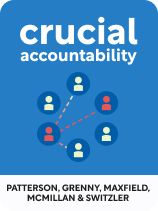

This article is an excerpt from the Shortform book guide to "Crucial Accountability" by Kerry Patterson, Joseph Grenny, et al.. Shortform has the world's best summaries and analyses of books you should be reading.
Like this article? Sign up for a free trial here .
Do you need help preparing for difficult conversations but don’t know where to start? What is the first step in preparing for a difficult conversation?
The book Crucial Accountability explores how to prepare for and initiate accountability conversations. When preparing for difficult conversations, the first step is identifying the key issue.
Keep reading to understand how to begin preparing for difficult conversations.
Preparing for the Discussion
The authors explain that in preparing for difficult conversations, you first need to identify the key issue at the root of the accountability grievance and then determine whether or not you should discuss it. You also need to avoid making assumptions by trying to see the issue from the other person’s perspective.
Identify the Key Issue
The first step to an accountability conversation is identifying the key issue and then determining whether or not it’s worth bringing up. The authors explain that accountability grievances usually come in bundles; instead of just one problem, there are often a whole host of issues that make up the grievance. However, there is usually one key issue at the root of the grievance—the underlying problem causing all the other issues. When the key issue is identified and solved, the other issues will likely be resolved as well.
If we don’t pinpoint the underlying problem, we could end up addressing the wrong issue or addressing too many issues at once, neither of which will solve the problem.
| Avoid Gunnysacking Sometimes when trying to identify the key issue, you’ll end up with more than one fundamental issue that’s bothering you. This may be because you’re actually dealing with several key issues that are independent of each other rather than linked to a single accountability grievance—in other words, an older set of issues that you’ve harbored over time. Harboring small resentments over time is called gunnysacking and can severely damage or even end your relationship. To address this kind of problem, you’ll need to have multiple conversations so each individual key issue can be discussed and addressed. |
Considering the Other Person’s Perspective
When preparing for difficult conversations, seeing the issue from the other person’s point of view avoids entering the conversation with negative assumptions. It’s human nature to make negative assumptions about why the other person did what they did and to not consider outside factors that might have impacted their decision. The authors explain that this is called the fundamental attribution error, which holds that when we’re the ones who make a mistake, we justify our actions in some way, but when another person messes up, we attribute the mistake to a flaw in their character.
(Shortform note: In A New Earth, Eckhart Tolle explains that the fundamental attribution error is a result of our ego. The ego constantly seeks to inflate our self image by deflating the image of others. When other people make mistakes and we automatically assume it’s because they are flawed, the assumption inflates our ego by making us feel better than them. By understanding why the fundamental attribution error happens, we can better avoid falling into its trap and more effectively see both sides of an issue.)
Before Giving Advice, Listen to the Other Person’s Perspective
The authors assert that we need to listen to the other point of view in order to make accurate judgments and solutions. The issue is about the other person, therefore, they’re the ones who’ll have the most information about what went wrong and why. This is arguably the most important step in preparing for difficult conversations.
Without hearing the other person’s perspective, you might be seeing the issue incorrectly or incompletely. For example, after hearing the other person’s side of the story, you might realize that their reaction was correct in that particular situation, even if they failed to meet expectations.
Ultimately, you need to speak to the other person to get the full picture and identify all the possible barriers. Then you can develop solutions.(Shortform note: Experts second the author’s argument here, explaining that when we enter a conversation with the belief that we fully understand the problem and how to solve it, it becomes difficult to truly listen to the other person and sends them the message that we don’t think they’re capable or valuable in solving the issue.)

———End of Preview———
Like what you just read? Read the rest of the world's best book summary and analysis of Kerry Patterson, Joseph Grenny, et al.'s "Crucial Accountability" at Shortform .
Here's what you'll find in our full Crucial Accountability summary :
- How to broach sensitive conversations with loved ones and coworkers
- How to prepare for, execute, and follow up on accountability conversations
- How to solve issues while improving your relationships






